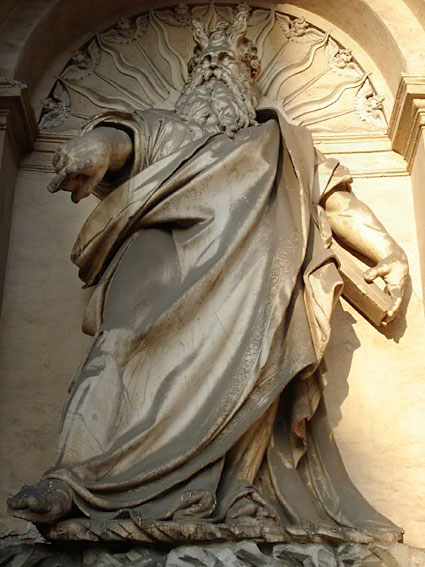Horns of Moses
or Meat to Eat – 1
“And whanne Moises cam doun fro the hil of Synai, he helde twei tablis of witnessyng, and he wiste not that his face was horned of the felouschipe of Goddis word..” —Exodus 34:29, Wycliffe
Perhaps you’ve seen those bumper stickers that say, “If we’re not meant to eat animals, why are they made of meat?”
NOTE: THIS POST HAS BEEN REMIXED AND INCLUDED IN GOD’S KITCHEN.
You must be logged in to see the rest of this post.
Join now for a year for $15!
___________________________________________________________
[1] See Omega Males.
[2] Jordan notes that the “pulse” that Daniel and friends ate in Daniel 1 is literally “seeds.” But he did eat the king’s food later on. See Touch Not, Taste Not, Handle Not for the biblical theology behind this.
[3] This might explain the three tusks/horns in the mouth of the Persian bear in Daniel 7:5. Jordan suggests that are they Daniel, Nehemiah and Mordecai—remnants of the throne of Solomon enabling Persia to devour the world. In the Bible, it’s the good angels (cherubim) that have the horns, and Daniel’s four beasts surrounded the throne of a resurrected Jew-Gentile kingdom, the oikoumene. This, of course, predicted “the age to come”, the gospel age, in which satan not only has no horns, but as the accuser he is now toothless. We have the teeth and the horns, the gospel.
[4] That is why it is mentioned in Revelation 18:12. Its position in the passage also supports this interpretation. See Totus Christus.
[5] Exodus 25-31 corresponds the Bronze Altar with the “four-cornered” Land of Day 3. Later, Canaan became the Altar. When Israel sinned, God basically turned the horns inward against those on the Land to scatter them. Zechariah shows the craftsmen rebuilding the Altar of Incense, not the Bronze Altar. This too had four horns, but it was a higher altar that Israel now represented. The Incense Altar (Day 5) is a Bronze Altar (Day 3) that has been slain under the Law (Day 4) and resurrected. Revelation also shows four angels ready to judge Herodian worship, thirsty for blood to atone for the murder of the prophets and the saints.
[6] In Exodus 24, Moses feasted with the elders and the Lord on the “crystal sea” (Exodus 24:10). Here, Moses was a “Solomon,” a king. It was the end of the “Egypt” cycle. However, when Moses ascended Sinai to receive the Law, he fasted. He was “eaten” as a priest. See Fasting as Sacrament. It was the beginning of a new cycle of creation and maturity.


























